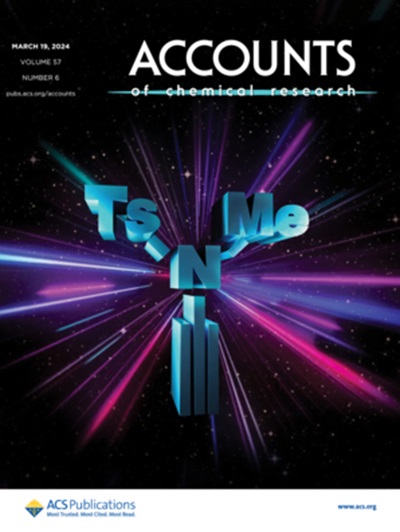Electrochemical Evaluation of Al-5 wt% Zn Metal Rich Primer for Protection of Al-Zn-Mg-Cu Alloy in NaCl
IF 17.7
1区 化学
Q1 CHEMISTRY, MULTIDISCIPLINARY
引用次数: 0
Abstract
An intact and X-scribed Al-5wt%Zn rich primer (AlRP) without pretreatment or topcoat was evaluated for its ability to suppress potential dependent intergranular corrosion (IGC) and intergranular stress corrosion cracking (IGC-SCC) of peak aged AA7075A-T651 in NaCl salt fog and full immersion. The ability of the primer to provide sacrificial anode-based cathodic prevention of peak aged AA7075-T651 substrate was evaluated both under the primer coating and at scratches. The AlRP evaluated consisted of an epoxy-based resin embedded with spherical Al-5wt%Zn pigment particles. Performance was evaluated under full immersion in 0.6 M NaCl solution and compared to ASTM B-117 salt spray exposure using two approaches. These consisted of the University of Virginia (UVa) cycle test on intact coatings and the full immersion galvanic couple testing on simulated scratched panels created when intact coatings form bimetal couples with bare AA7075-T651. Focus was placed on the ability of the AlRP to achieve a targeted intermediate galvanic couple potential near a “prevention” potential which suppresses stress corrosion crack growth, intermetallic particle corrosion as well as intergranular corrosion. The long term (24-hour) open circuit potential (OCP) of AlRP coated AA7075-T651 in 0.6 M NaCl indicated that the AlRP provided less than 100mV of cathodic potential shift of the intact coating from its OCP. Electrochemical cycle testing conducted at −0.95 VSCE demonstrates that the AlRP did not enable sacrificial anode-based cathodic protection as the coupled potential remained at the corrosion potential of bare AA7075-T651. Furthermore, the current observed throughout galvanic corrosion experiments coupling of AlRP:AA7075-T651 indicated the AlRP coating was a cathode in the bimetal galvanic couple. ASTM B117 salt spray exposure of the AlRP revealed oxidation of the AA 7075-T651 substrate below the primer detected as a continually growing oxygen signal at the primer-substrate interface that did not arrest corrosion over the exposure period.用于在氯化钠中保护铝-锌-镁-铜合金的 Al-5 wt% 富锌金属底漆的电化学评估
评估了一种不含预处理或面漆的完整和 X 刻蚀的 Al-5wt% 富锌底漆 (AlRP)在氯化钠盐雾和完全浸泡条件下抑制峰值老化 AA7075A-T651 的电位相关晶间腐蚀 (IGC) 和晶间应力腐蚀开裂 (IGC-SCC) 的能力。在底漆涂层下和划痕处评估了底漆对峰值老化的 AA7075-T651 底材提供牺牲阳极阴极防腐蚀的能力。所评估的 AlRP 由环氧基树脂和球形 Al-5wt%Zn 颜料颗粒组成。采用两种方法对完全浸泡在 0.6 M NaCl 溶液中的性能进行了评估,并与 ASTM B-117 盐雾暴露进行了比较。这两种方法包括对完整涂层进行弗吉尼亚大学(UVa)循环测试,以及对完整涂层与裸 AA7075-T651 形成双金属耦合时产生的模拟划痕面板进行全浸电偶测试。重点放在 AlRP 实现目标中间电偶电位的能力上,该电位接近 "预防 "电位,可抑制应力腐蚀裂纹生长、金属粒子间腐蚀以及晶间腐蚀。在 0.6 M NaCl 中对涂有 AlRP 的 AA7075-T651 进行的长期(24 小时)开路电位(OCP)测试表明,AlRP 使完整涂层的阴极电位偏离其 OCP 不到 100mV。在 -0.95 VSCE 条件下进行的电化学循环测试表明,由于耦合电位保持在裸 AA7075-T651 的腐蚀电位上,因此 AlRP 无法提供牺牲阳极阴极保护。此外,在 AlRP:AA7075-T651 耦合的整个电化学腐蚀实验中观察到的电流表明,AlRP 涂层是双金属电化学耦合中的阴极。AlRP 的 ASTM B117 盐雾暴露表明,底漆下面的 AA 7075-T651 基体发生了氧化,在底漆-基体界面上检测到持续增长的氧信号,但在暴露期间并未阻止腐蚀。
本文章由计算机程序翻译,如有差异,请以英文原文为准。
求助全文
约1分钟内获得全文
求助全文
来源期刊

Accounts of Chemical Research
化学-化学综合
CiteScore
31.40
自引率
1.10%
发文量
312
审稿时长
2 months
期刊介绍:
Accounts of Chemical Research presents short, concise and critical articles offering easy-to-read overviews of basic research and applications in all areas of chemistry and biochemistry. These short reviews focus on research from the author’s own laboratory and are designed to teach the reader about a research project. In addition, Accounts of Chemical Research publishes commentaries that give an informed opinion on a current research problem. Special Issues online are devoted to a single topic of unusual activity and significance.
Accounts of Chemical Research replaces the traditional article abstract with an article "Conspectus." These entries synopsize the research affording the reader a closer look at the content and significance of an article. Through this provision of a more detailed description of the article contents, the Conspectus enhances the article's discoverability by search engines and the exposure for the research.
 求助内容:
求助内容: 应助结果提醒方式:
应助结果提醒方式:


